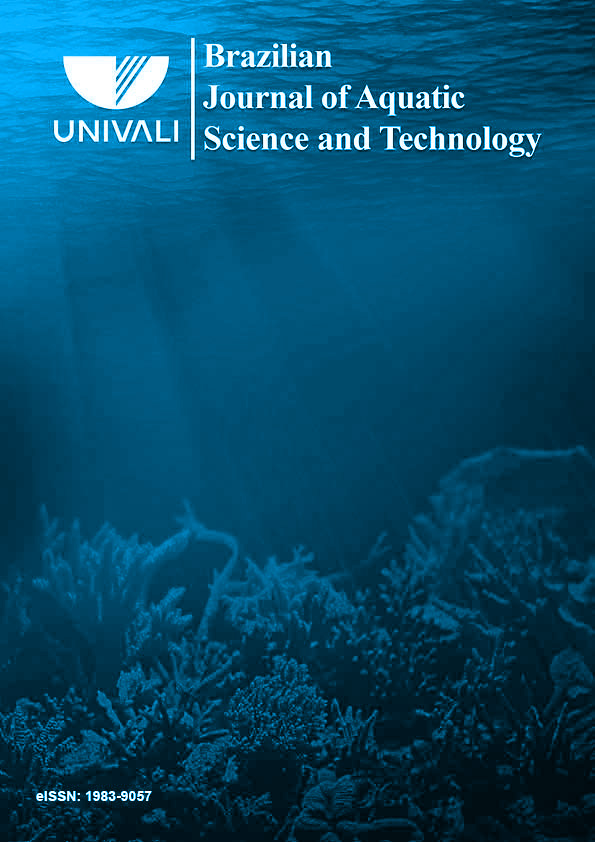Avaliação de Macroinvertebrados Bentônicos em Viveiros Escavados em Londrina-PR.
DOI:
https://doi.org/10.14210/bjast.v23n1.12326Abstract
Biomonitoring with the use of benthic macroinvertebrates has been an effective tool used to evaluate water quality in several water bodies. In this context, there are several factors that can act on the structure of macroinvertebrate commuinities, with indications of the influence of aquaculture. Therefore, the present study evaluated the composition of macroinvertebrate populations in two earthen ponds of a fish farm in Londrina-PR. Three collections were carried out: in October of 2015 and February and July of 2016, with the use of artificial biocolectors. The macroinvertebrates were quantified and identified, and diversity indexes were calculated with the data obtained. Higher number of taxa, higher number of individuals and greater diversity and uniformity in macroinvertebrate communities were found in pond 1 (water entrance), due mainly to the presence of taxa tolerant or resistant to organic pollution, which may be related to the higher concentration of nutrients and organic matter in this pond. However, in pond 2 (water outlet), individuals of Polycentropodidae (Trichoptera) were found in all collections, in addition to a low abundance of taxa that would indicate organic enrichment, demonstrating better water quality. Furthermore, greater abundance and diversity were observed in the months with higher level of precipitation. From the perspective of aquaculture, the results found in pond 1 can be used as indicative of greater productive potential, however, the low frequency of taxa typical of clean environments may indicate low oxygen levels.These results demonstrate that the position of the pond relative to the water source in a fish farm can influence the water quality, which can be verified through the structure of the benthic macroinvertebrates communities.
Downloads
Published
Issue
Section
License
Authors who publish with this journal agree to the following terms:
1. Authors retain copyright and grant the journal right of first publication with the work simultaneously licensed under a Creative Commons Attribution License that allows others to share the work with an acknowledgement of the work's authorship and initial publication in this journal.
2. Authors are able to enter into separate, additional contractual arrangements for the non-exclusive distribution of the journal's published version of the work (e.g., post it to an institutional repository or publish it in a book), with an acknowledgement of its initial publication in this journal.
3. Authors are permitted and encouraged to post their work online (e.g., in institutional repositories or on their website) prior to and during the submission process, as it can lead to productive exchanges, as well as earlier and greater citation of published work (See The Effect of Open Access).

